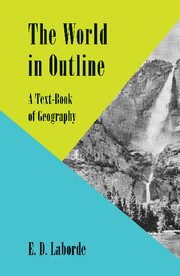PART VI - AUSTRALIA, NEW ZEALAND, AND THE PACIFIC ISLANDS
Published online by Cambridge University Press: 05 June 2016
Summary
BROADLY speaking, the world is divided into two parts: the larger part which looks out on to the Atlantic Ocean, and the smaller which faces the Pacific. In the Americas the Pacific lands form a narrow strip from the ridge of the backbone of mountains to the Ocean, and in Asia there are the wide areas of Japan, eastern Siberia, Manchuria, China, Indo-China, and Malaya with its associated East Indian Islands. But in the great Ocean itself is a vast swarm of land fragments ranging in size from the merest islet to the veritable continent of Australia.
These Pacific lands, whether they are part of a continent or are washed on all sides by the Ocean, form a world apart from the civilisation of western Europe. This is not through any general likeness among themselves, but just through unlikeness to the rest of the world. In modern times the Pacific world has been invaded by the West, and the results are interesting, though sometimes appalling, for we have seen the substitution of a Western people for primitive Pacific folk in Australia, the introduction of industrialism into Japan, and the forcing on the vast multitudes of China of the ideals of Western civilisation. Hitherto, the Pacific lands have been the world's back garden, but the rise of Japan to the position of a Great Power, the awakening of China, and the progress of the west coast strips of America, together with the increasing facilities and speed of transport and communication, have enhanced the importance of the area. The evolution of a ‘Pacific civilisation’ does not seem possible, since the very improvements in communication which might create such a separate culture will prevent its growth by maintaining a connexion with the West which will ensure a constant mingling of ideas.
The axis of the Pacific lands is the 180th degree of Longitude, that mysterious line along which one day changes into the next and whose place for all practical purposes has been taken in modern times by the arbitrary International Date Line. The Pacific coasts of the Americas and Asia are dealt with elsewhere in this book: here it is proposed to treat of only the lands lying within the southwestern quadrant of the Ocean, together with the purely oceanic islands in whatever quadrant.
- Type
- Chapter
- Information
- The World in OutlineA Text-Book of Geography, pp. 419 - 426Publisher: Cambridge University PressPrint publication year: 2013



